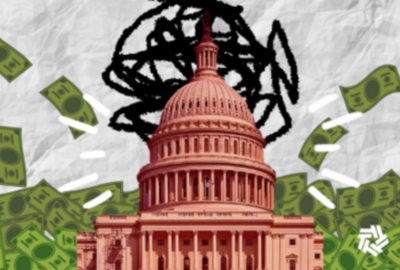Pay gap between federal employees, private-sector workers continues to grow
The gap in pay between federal employees and private-sector workers widened slightly this year, according to data presented at the annual meeting of the Federal...
The gap in pay between federal employees and private-sector workers widened slightly this year, according to data presented at the annual meeting of the Federal Salary Council on Tuesday.
On average, federal employees earn 35.37 percent less than their private-sector counterparts, according to data from the Office of Personnel Management and the Labor Department’s Bureau of Labor Statistics.
The pay gap is calculated by comparing the average salaries earned by federal employees and private-sector workers doing similar work in specific geographic areas known as locality-pay areas.
The slight uptick this year is the latest widening of a gap between public and private salaries long noted by the council. Last year, alone, the gap jumped 8 percentage points to more than 34 percent.
“Obviously, three years of pay freeze are catching up,” said American Federation of Government Employees National President J. David Cox, who sits on the council. Federal employees have been without an across-the-board pay increase since January 2010, the result of deficit-reduction efforts initially supported by President Barack Obama. Congress later extended the pay freeze through the end of 2013.
President of the National Treasury Employees Union Colleen Kelley said the goal isn’t necessarily to close the 35 percent gap in one fell swoop but to begin to “make a substantive dent in it.”
Obama’s proposal for a slight 1 percent raise — the first in four years — could begin to do that, she suggested.
“I’m hoping that we will see a recognition in the future that — now that we’ve been able to break the freeze — we need a fair and appropriate number,” Kelley said. “One percent’s not it. I don’t think that’s enough.”
Congress still must approve the pay increase.
The issue of whether a public-private pay gap exists and which group it favors has long been contentious. No fewer than six studies in recent years have looked at the issue, often coming up with widely varying results. For example, the conservative American Enterprise Institute reported in 2011 that federal employees earn, on average, 14 percent more in pay than private- sector workers. The nonpartisan Congressional Budget Office estimated in 2012 that federal employees earn just 2 percent more than private workers.
But Cox said he believes the council’s figures are definitive.
“I believe it’s a very solid number, and we’ve carried this on through Republican and Democratic administrations with the same process, the same procedure,” he said.
Adding new locality-pay areas on hold
The council is also tasked with recommending new locality-pay areas to the President’s Pay Agent, which is made up of the directors of OPM and the Office of Management and Budget along with the secretary of the Labor Department.
However, actual locality-pay rates for 2014 were not up for debate. Obama determined earlier this year that 2014 rates would remain frozen at 2013 levels.
That has led to a delay in the approval of 12 new locality-pay areas that the council first recommended be added last year.
Despite the council’s recommendation, the Pay Agent never completed the necessary regulations to add the new areas, presumably because of the President’s decision to freeze locality-pay levels at 2013 rates, according to council documents.
The council decided to hold off on considering whether to add any more locality- pay areas until those initial 12 areas are added. The council also recommended that the Pay Agent issue the delayed regulations as soon as possible.
In the meantime, though, that means areas, such as Burlington, Vt., which currently does not fall into a locality-pay area, won’t receive any special adjustments.
Lisa Rees, a manager at the U.S. Citizenship and Immigrations Service in Burlington and president of the Vermont Federal Executives Association, requested the council evaluate whether to add the city to the list of locality-pay areas.
She told the council that agencies are having a hard time enticing new hires to move to the area to take a job since the absence of locality pay means they could be taking a pay cut to do so.
“It takes a long time to cull through the list to find someone who will say, ‘I will move to Vermont,'” Rees told the council. “Locality pay just really helps us attract the best. That’s what we want: the best and the brightest. We don’t want our 50th pick.”
RELATED STORIES:
Obama ends federal pay freeze; Congress could still block
Federal pay statistics are easily manipulated, GAO reports
Pay gap between government, private sector widens to 34 percent
In the federal pay debate, 1 + 1 doesn’t always equal 2
Copyright © 2024 Federal News Network. All rights reserved. This website is not intended for users located within the European Economic Area.





